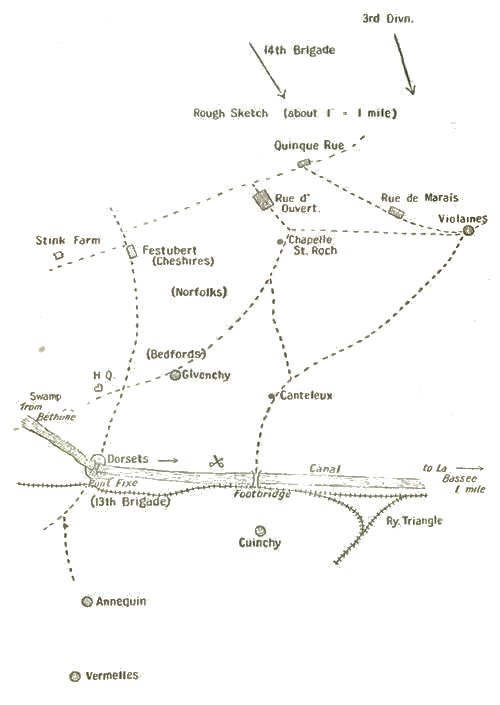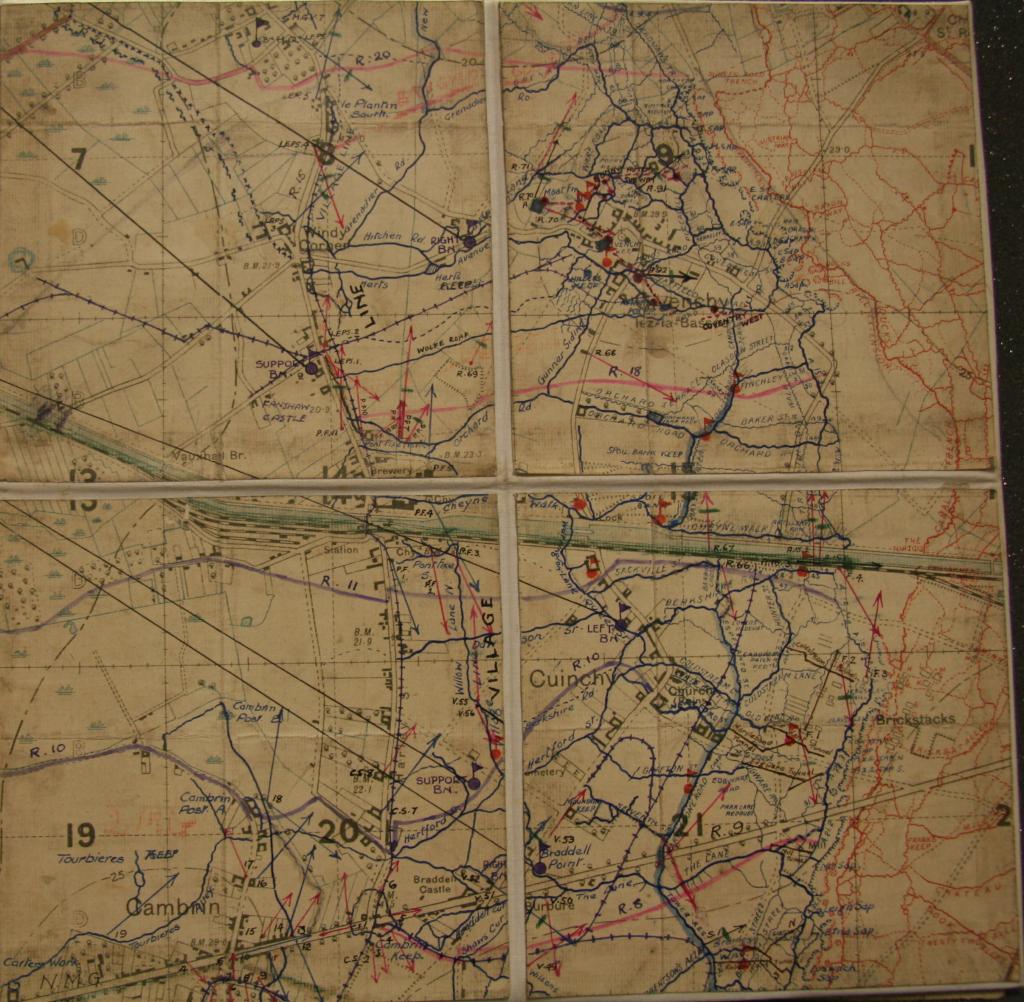13th October 1914
The 15th Brigade resumed their attack along the canal at 5:30am. B and C Companies were sent into the firing line. D Company was put in support and A Company was held in reserve. A single machine gun was positioned in a cottage near to the lock.
The Dorsets moved along the canal bank keeping in line with the Bedfords to the north and the K.S.O.B. to the south of the canal. The early morning mist helped their movement and progress was good.
The German opened up a tremendous bombardment on Givenchy using heavy artillery. Smoke and mist and brick dust from the falling buildings drifted across the battlefield.
Bols couldn’t get in touch with either of the supporting units and it appears that the Dorsets then halted and prepared defensive trenches.
The situation became even more dangerous as the mist cleared. Rather than finding the K.S.O.B. on their right, the Dorsets found the enemy. Like yesterday, the Germans had excellent cover from the high bank which ran along the canal. They poured fire into the exposed troops. At the same time enemy artillery started shelling them from the north east.
The Dorsets’ single machine gun couldn’t help them. As it responded to the German rifle and machine gun fire it rapidly received return fire. The gun’s main operator was quickly killed. Any attempts to get the gun firing again were quickly extinguished by enemy snipers.
B Company were really catching it now and they quickly lost several of their officers. At around midday they began to withdraw. At this time the Germans found D Company in support with a Field howitzer battery. Some of 15th Brigade’s 18 pounders which had been moved up in support were also targeted.
Captain Ransome, seeing the severity of the situation, took the initiative and moved A Company back to a sunken road by the lock near Pont Fixe to form a rallying point. Major Saunders had been sent back to organise this and to ask for artillery support.
At this point things went from bad to worse for the Dorsets. The Bedfords withdrew from Givenchy, unable to withstand the bombardment that had reduced the village to rubble in a matter of hours, burying many of their men in the process. The Germans advancing, then immediately launched an attack on the left hand flank of the Dorsets.
At around 1:45pm C Company reportedly saw men approaching carrying lances. Nothing was done as they apparently thought they were French cavalry. Then more Germans, about a battalion’s worth, were seen approaching, some of them reportedly holding their hands up. Thinking they were surrendering, the Dorsets paused for a fateful moment. The Germans charged. These two strange mistakes proved to be disastrous, but it was a day where a series of events led to the Dorsets putting themselves into an untenable position.
The Dorsets had dug such deep trenches that they couldn’t get out quickly enough. The men of the left hand flank of C Company were totally overwhelmed. In the adjacent trench, men fought to the last man, Lieutenant Pitt was killed and Battalion Commander Bols went down injured, shot through the back and the arm. The remainder of the men tried to withdraw over open ground. They were quickly cut down by the German rifle and machine guns on the south bank of the canal.
The survivors ran back to the position held by A Company, helped in some part by defensive machine gun fire. The Germans overwhelmed the 18 pounder battery, one of the machine guns and pushed up to Pont Fixe. A Company held the line. Gleichen pushed two Companies of the 2nd Bn Devons into support them. They held onto this position for the rest of the day, under heavy bombardment.
Major Saunders assumed command of the Battalion. What was left of it.
The Dorsets’ losses were severe. The war diary reports 51 killled, 152 wounded and 210 missing. The official history reports 18 killed, 126 wounded and 284 missing. The CWCG lists 87 men killed on 13th October 1914.
They had lost 12 officers, killed or wounded. It was a dark day for the Dorsets.

